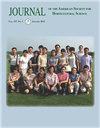从树液中提取钠可能允许在暴露于100 mm NaCl的耐盐杂交开心果砧木的成熟木质部组织中保持碳水化合物储备
IF 1.1
4区 农林科学
Q3 HORTICULTURE
Journal of the American Society for Horticultural Science
Pub Date : 2021-05-05
DOI:10.21273/JASHS05023-20
引用次数: 1
摘要
盐度的许多胁迫可能不会在一个季节内杀死相对耐盐的多年生植物,但它们仍然会耗尽或改变非结构碳水化合物(NSC)库。NSC储量数量或质量的任何变化都可能对树木作物的酚学和繁殖以及产量产生不利影响。本研究通过测量用≈100天的中高盐度(50–100 mm NaCl和10–20 mm CaCl2)处理后木材、树皮和根中的糖和淀粉库,整合了盐度对开心果砧木“UCB-1”(atlantica和P.intelrima的种间杂交种)衰老时能量边际的侵犯。在使用正钒酸钠(NaOV)阻断同一杂交开心果砧木中木质部主动回收的第二个实验的支持下,我们得出结论,从木质部汁液中回收Na+可以通过限制对基于碳的渗透性物质(糖)的需求,来保存成熟木质部组织中的NSC库(特别是淀粉)。相反,年轻生长的组织(树皮和细根)被发现通过将碳密集的淀粉降解为渗透活性糖来抵消盐度,而牺牲了NSC的总储量,这表明在这些组织中,从生理上向保护/隔离环境中普遍存在但潜在有毒的盐转变。本文章由计算机程序翻译,如有差异,请以英文原文为准。
Sodium Retrieval from Sap May Permit Maintenance of Carbohydrate Reserves in Mature Xylem Tissues of a Salt-tolerant Hybrid Pistachio Rootstock Exposed to 100 mm NaCl
Salinity’s many stresses may not kill a relatively salt-tolerant perennial in one season, but they can still deplete or modify nonstructural carbohydrate (NSC) pools. Any change to the quantity or quality of NSC reserves may have detrimental effects on phenology and reproduction, as well as yield, in tree crops. This study integrates salinity’s infringement on the energy margins of pistachio rootstock ‘UCB-1’ (an interspecific hybrid of Pistacia atlantica and P. integerrima) at senescence by measuring sugar and starch pools in wood, bark, and roots after treatment with ≈100 days of moderate to high salinity (50–100 mm NaCl and 10–20 mm CaCl2). Supported by a second experiment using sodium orthovanadate (NaOV) to block active xylem retrieval in the same hybrid pistachio rootstock, we conclude that retrieval of Na+ from xylem sap may allow for the preservation of NSC pools (particularly, starch) in mature xylem tissues by limiting the demand for carbon-based osmoticum (sugars). In contrast, younger growing tissues (bark and fine roots) were found to counteract salinity by degrading carbon-dense starch into osmotically active sugars at the expense of total NSC reserves, suggesting a physiological shift toward protection/isolation from environmentally pervasive but potentially toxic salts in these tissues.
求助全文
通过发布文献求助,成功后即可免费获取论文全文。
去求助
来源期刊
CiteScore
3.80
自引率
0.00%
发文量
31
审稿时长
2 months
期刊介绍:
The Journal of the American Society for Horticultural Science publishes papers on the results of original research on horticultural plants and their products or directly related research areas. Its prime function is to communicate mission-oriented, fundamental research to other researchers.
The journal includes detailed reports of original research results on various aspects of horticultural science and directly related subjects such as:
- Biotechnology
- Developmental Physiology
- Environmental Stress Physiology
- Genetics and Breeding
- Photosynthesis, Sources-Sink Physiology
- Postharvest Biology
- Seed Physiology
- Postharvest Biology
- Seed Physiology
- Soil-Plant-Water Relationships
- Statistics

 求助内容:
求助内容: 应助结果提醒方式:
应助结果提醒方式:


